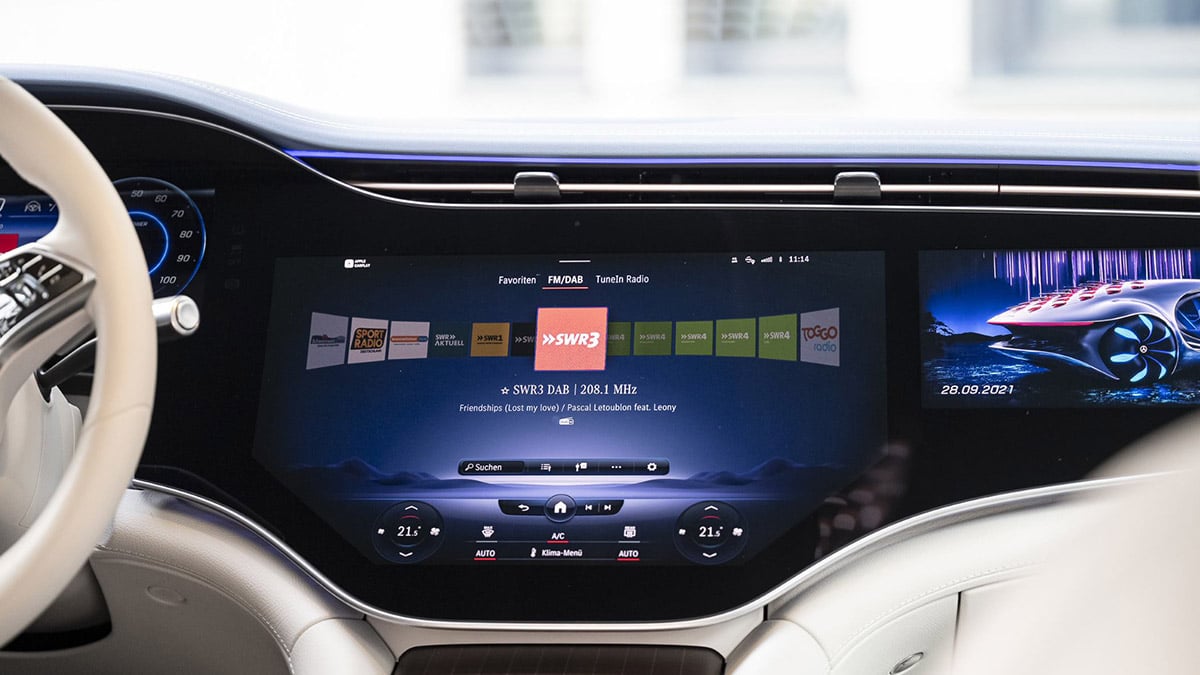SAN JOSE, California — Radio and the automobile have come a long way since Lee de Forest demonstrated a car radio at the 1904 Louisiana Purchase Exposition in St. Louis. This simple demonstration sparked the imagination and showed what was possible. Eventually, AM radio stood alone and became near-standard equipment in cars until FM radio joined it in the 1950s. AM/FM radio were, for decades, the exclusive, mass market audio service in the car and continued to thrive even as the 8-track, cassettes and CDs fought for their space in the dash.
Innovation in car audio focused mainly on control (“brought in” tech) and fidelity (speakers and amplifiers) and not necessarily on delivering more content or choice. With the introduction of digital technologies, that has begun to change rapidly.
Starting in the late 1990s, broadcast radio began to reinvent itself with DAB and later DAB+, HD Radio and, most recently, CDR. These digital broadcast technologies have allowed broadcasters to modernize their infrastructure, improve the quality of their audio services, offer a wider variety of programming and, for the first time, deliver rich, descriptive visual metadata to enhance the end-user experience. But at its core, radio’s most valuable attributes are not technology-dependent, but come from its programming and localism, immediacy and connection to a community. In the rapidly changing digital age, these attributes have served radio well and provided stalwart protection from the competition.
Radio’s competition
However, innovation outside of the vehicle, particularly in mobile phones, has accelerated at a breakneck pace. It has provided an environment for developing and refining new audio services, business models and consumer behaviors. These services are well-known and serve close to 2 billion weekly users around the world. These platforms, unlike radio, provide access to a much wider range of content, usually on-demand, without the need for a dedicated piece of hardware — the broadcast radio tuner. Rather, they rely on the common data capacity of mobile networks to deliver their content.
The introduction of Bluetooth technology in cars in the early 2000s was a harbinger of things to come: the inevitable convergence of mobile services into the dashboard. The race for the dash is well underway and well-funded, with large global technology companies developing operating systems, platforms, voice assistants and applications targeted explicitly towards gaining dominance in the digital dash and holding the attention of the captive audience in the cabin.
While CarPlay and Android for Auto dominate the current in-car, brought-in technology experience, the services they offer are not actually integrated into the dash, but rather mirrored services of those already running on mobile phones.
However, this dependency on devices is disappearing with the advent of new embedded connectivity solutions that enable applications to run natively in the vehicle, much like traditional broadcast radio and dashboard-based navigation systems.
The race for the dash is well underway and well-funded.
Probably the most advanced of these services is from Google, based on Android Automotive and Google Automotive Services. This foundation also enables all the big audio players to develop and offer integrated audio services that will sit side-by-side with broadcast radio. Companies like Spotify, TuneIn and Amazon have a huge loyal listener base, easy access to capital and the ability to innovate and enhance their service at a moment’s notice, and to do this simultaneously around the world across platforms.
How radio remains relevant
Given this daunting reality, how can radio compete and remain relevant in the dash?
Radio needs to do three things and do them well:
- Continue to create amazing programming. It may sound trite and obvious, but the power of local radio and its community is unique and compelling. The large global technology players cannot replicate it easily. There are communities on these platforms, but they are different. They are living a shared experience in the digital world. Radio, on the other hand, creates community in the physical world, in the neighborhood, in the village with people you interact with daily. These are deep, meaningful “IRL” connections that people continue to seek out and cherish.
- Be everywhere. At their launch, digital technologies were expensive to adopt and required very specialized skills. That is no longer the case. Whether it’s apps, smart speakers or connected TVs, radio stations should have robust digital strategies that provide a presence on all these platforms. Once there, stations should ensure they are discoverable, and leverage the other platforms to continue to move listeners back to over-the-air listening as the most cost-effective delivery platform.
- Partner. Decentralization is one of radio’s greatest strengths, but also its Achilles’ heel. There are well over 100,000 radio stations worldwide; providing any kind of collaborative innovation or consistent service beyond transmitting audio is untenable for the industry. As broadcasters look to exploit connectivity in the car to enhance the listener experience, they must look to trusted, capable, proven solution providers to help achieve that goal.
The industry is up against incredible competition and must be realistic, pragmatic and deliberate in its response. There are very few partners the industry can turn to, who meet all those criteria, and I am proud to count Xperi among them.
In fact, I would submit that Xperi and our DTS AutoStage solution is the only global solution that can deliver the expected service, reliability, innovation and protections that broadcasters, automakers and listeners deserve and have come to expect. And all this is available to broadcasters for free.
Together, we can ensure radio has a long and vibrant future in the dash, and continues to educate, entertain and inform its audiences around the world.
The author is senior vice president of broadcast radio for Xperi Corp.

